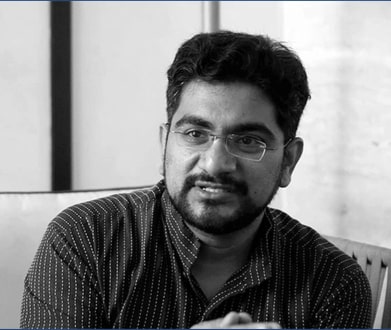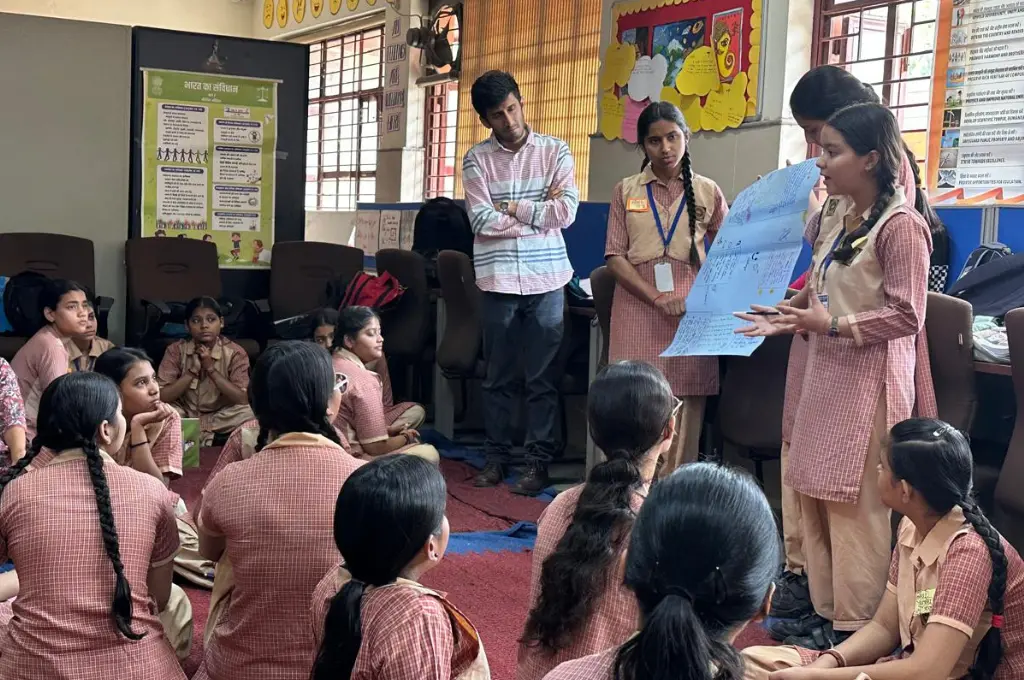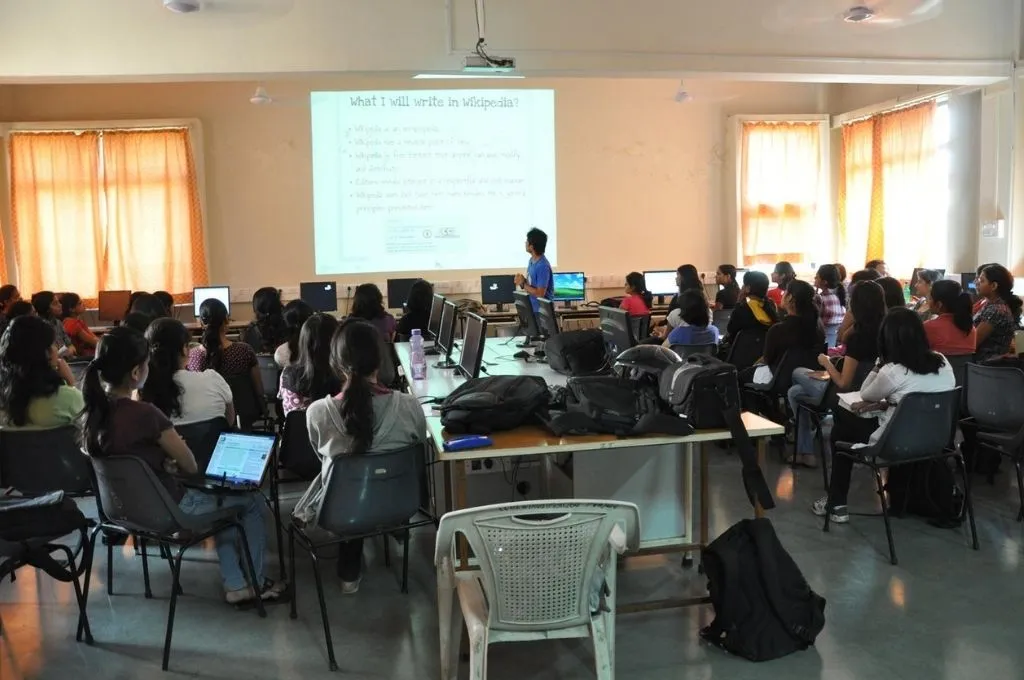The National Education Policy (NEP) was approved by the Union Cabinet of India on July 28th, 2020. After a gap of 34 years, the Indian government consolidated feedback from 2.5 lakh village-level stakeholders to two national parliamentary level committees, over more than 50 months of consultations and workshops. However, the extent to which the policy has incorporated recommendations remains unknown.
In the midst of multiple op-eds and commentaries about the NEP, this article attempts to analyse the policy from the lens of practitioners. In particular, we examine nine key chapters of the ‘school education’ section from our experience over the last five years of having seen the policy life-cycle through formulation, implementation, and (lack of) evaluation in Maharashtra.
1. Early Childhood Care and Education (ECCE)
- Extends the Right to Education eligibility window from 6-14 years to 3-18 years. With a goal of having 100 percent of children ‘school-ready’ by 2030, the policy pushes for universalisation of ECCE.
- Investment in infrastructure such as play equipment and child-friendly buildings, as well as continuous professional development (CPD) of ECCE teachers and anganwadi workers through a six-month certification programme, including some online components.
- Maintaining the status quo of having curriculum under one ministry and implementation with three different ministries. Till date, this strategy has led to poor integration of ECCE with elementary education. The NEP’s recommendation of a ‘joint task force’ doesn’t seem like an adequate measure to address this well-known gap.
- Lack of clarity around whether every anganwadi or pre-primary learning center will be equipped with a high-quality teacher and a worker (sevika).
Related article: India cannot afford the National Education Policy (NEP)
2. Foundational Literacy and Numeracy (FLN)
- A three month preparatory course for students, access to digital content through energised textbooks (ETB-DIKSHA), student-led peer learning, and community tutoring are recommended as some of the means to achieve 100 percent foundational level (upto Grade 3) learning by 2025.
- Teacher vacancies to be filled in a time-bound manner, with a priority to disadvantaged areas and sections of the society.
- No definition of what a basic text is, against which literacy will be measured.
- A National Book Promotion Policy is mentioned. However, more than a policy on books, it is important to prioritise access to relevant, age-appropriate reading materials across different languages for students, which is already an ongoing focus of government programmes such as Samagra Shiksha.
- An exclusive focus on foundational learning might take away from students being able to master grade-level learning outcomes. Further, the impetus to children who are considered ‘gifted’, and/or those who are ‘high performers’, might be restricted as a result.
All in all, while the policy is not legally bound to any action, it definitely makes clear the government’s vision to usher in some landmark changes to the education sector. | Picture courtesy: Rawpixel
3. Universal access to education at all levels
- A commitment to achieve 100 percent Gross Enrolment Ratio (GER) across all levels by 2030.
- Investment in resources such as infrastructure and teachers for students till Grade 12; as well as ensuring social workers and counsellors are made available to students, so they can address factors contributing to dropout rates.
- Rigorous tracking of 100 percent of children, through a technology-based platform to ensure no one is left behind.
- Encouraging different public-private partnership school models to curtail the number of dropouts and out-of-school children.
- No clarity on the ratio of social workers or counsellors to children, and at what level they will be appointed (for instance, school or cluster level), or whether they will be sourced from existing personnel of other ministries.
- No clear mention of legal violations (including child marriage and child labour), which contribute to school dropouts.
- No clarity about the social and professional (economic) value of the open learning courses made available to children who are unable to access schooling.
4. Curriculum and pedagogy in schools
- The policy encourages local languages to be the medium of instruction at least up to Grade 5; promotes bi-lingual education and textbooks for learning; as well as multiple languages at middle and secondary levels.
- The suggested 5+3+3+4 class system focuses on defining learning levels at each critical juncture, taking a multi-disciplinary approach, and reducing content by targeting core learning competencies.
- New age subjects such as coding and computational thinking (among others) introduced at a middle school level.
- Students can now choose subject courses in secondary school (primarily in arts, physical, and vocational education).
- There is no definitive decision or guideline around the language of instruction. For example, the policy says to use local languages ‘wherever possible’, which leaves a lot of room for the status quo—which is the existing three language formula—to continue, especially in the case of the high-performing government run school systems such as Kendriya Vidyalayas (KVs).
- The policy includes a seemingly exhaustive list of pedagogies, values, skills, and methods, which are all ‘good to have’. Many of these are already present in the National Curriculum Framework of 2005, and there are challenges that have been documented in translating them into teacher practices or student behaviours.
- The issue of children’s ‘mother tongue’ and home language being different from the local language used for instruction in schools, especially in the case of migrant and Adivasi families, has not been addressed.
- The policy asks educators to integrate ‘Indian knowledge systems’ covering subjects like yoga, Indian philosophy, and Adivasi/indigenous ways of learning, in the syllabus. However, upskilling educators, who presently struggle even to teach the basic syllabus, to integrate these complex ideas in a secular and inclusive manner, is definitely a challenge.
- National textbooks, which have been proposed, could be interpreted as an effort to over-centralise education.
- Teachers could become confused about prescribed classroom practices, due to the lengthy list of approaches that have been listed. This could also lead to a lack of focus as well as limited success in any single approach.
Related article: Why Indian children can’t read
5. Testing and assessments
- Focus on measurable learning outcomes at all levels of the newly proposed schooling system, with testing at 3rd, 5th, and 8th grade levels.
- Promoting formative assessments (those that are conducted on an ongoing basis covering smaller portions of the syllabus), peer assessment, and holistic progress reports, to measure the ongoing academic progress of the children.
- Student choice to be incorporated in the 10th and 12th grade board exams. The policy suggests doing so by offering freedom of subject choice, allowing best of two attempts, and choice of difficulty (standard and higher level).
- The policy suggests formation of two new agencies: PARAKH and NTA—Performance Assessment Review Analysis of Knowledge for Holistic Development and National Testing Agency, respectively. These new agencies could lead to over-centralisation, and potentially, over-testing of children at national and state levels.
- Overlap between importance given to 12th standard board exams, as well as common university entrance examinations after 12th standard.
- Funding linked to performance of states may actually result in low-income and low-performing states being strapped for central funding in the future, leading to further stratification.
- The policy suggests the development of a holistic progress report card for students and parents, that can be accessed through an AI based software for periodically tracking their growth. However, it does not clarify how the existing glaring digital divide will be bridged.
- The policy language mentions the focus on ‘gifted students’ to increase admission into IITs/NITs via promoting Olympiads and other competitive testing. Poorer families cannot afford preparation and exam fees for Olympiads, and if premier institutes include them in their admissions criteria, as suggested by the policy, it would deepen existing social inequities in higher education.
- High stakes testing culture (with schools required to publicly list student scores) on multiple state and national assessments, will pressurise children to perform, negating the intended effect of ‘reducing coaching culture’, which was a problem highlighted in the policy in the first place.
- Teachers and schools will start teaching for the test, completely leaving aside the holistic learning objectives envisioned in the curriculum section.
With a goal of having 100 percent of children ‘school-ready’ by 2030, the policy pushes for universalisation of Early Childhood Care and Education (ECCE).| Picture courtesy: Rawpixel
6. Teachers and teacher education
- The policy proposes the minimum teacher education degree requirement to change from the current two year D.El.Ed/B.Ed degree to a four year B.Ed undergraduate programme, by 2030.
- Excessive teacher transfers to be halted, in principle, leading to better continuity with students, as also provision for local residence.
- Policy strongly suggests promotion based on merit, rather than on seniority and teaching level (elementary/primary/secondary). There are also options for vertical mobility of teachers, where high-performing teachers can be promoted to work at a district or state level.
- Promotion of blended learning teacher training programmes (MOOCs) for CPD of teachers and school principals, with at least 50 hours of CPD mandated per year.
- Missed opportunity to improve effectiveness of in-service teacher training by linking it to credits aligned with seniority. (A global best practice is to have ‘credits’ allocated to successful completion of each teacher training programme; where the accumulation of credits within a 10-year period can be linked to qualification for increments, and/or form the basis of some weightage for promotions.)
- There is no strong commitment to improving support for special education. The policy talks about a step-up course for current special educators, but that’s not adequate unless the number of special educators are increased in appropriate ratio with students.
- Graduate teachers with four years of university education could find the INR 4,000 average salary in low-cost private schools (making up more than 70 percent of the private school sector) to be untenable, causing a stir in the sector, or raising the overall cost of operations of those schools, making it not so ‘low-cost’ in the long run.
- Confusion around how to lift the professional qualification of existing teachers to the level of the future four-year trained teachers. Distinct factions forming within teacher unions and professional communities is also a possibility. Alternatively, an immensely resource intensive and challenging, or potentially contested, process of upskilling will have to be undertaken.
- The policy has some allusions to performance-based pay/incentives to teachers, mentioning robust benchmarks, including peer reviews. However, global level pitfalls have been documented in cases where the performance-based incentive system is not done collaboratively.
7. Equitable and inclusive education
- The ‘Gender Inclusion Fund’ which supports female and transgender students by driving state-level inclusion activities, developing sufficient infrastructure for safety, and targeted boarding.
- Special Education Zones (SEZs) and Kasturba Gandhi Balika Vidyalayas (KGBVs)/KVs to be set up in aspirational districts, with targeted focus on improving the quantity and quality of learning
- There are no action points or time-bound goals on bridging the gap among social categories or for children with special needs; only ‘verbal acknowledgement’ that inequities exist.
- Mention of ‘culture of inclusion’ at school level, but no details on how one would make that happen.
- Given the deteriorating educational outcomes of certain religious minorities, especially Muslims, there could have been better acknowledgement and support stated in the policy.
- The issue of female student safety and sexual abuse is not addressed either at the boarding school level or in the Gender Inclusion Fund.
- There is no clarity on role, appointment, budgets, ratios, and so on, of the social workers, special educators, and counsellors who are required to bridge various developmental and social inclusion gaps.
8. School complexes
- Re-organising smaller schools with very low enrolment into a ‘school complex’ structure, which connects 10-15 such small schools into one administrative unit, will help reduce school isolation, efficiently use teaching learning resources, and increase governance and accountability, especially in rural/Adivasi parts of India.
- Providing autonomy to plan and implement the initiative locally is a good idea in principle. School Complex Management Committee (SCMC) and public representation at a school complex level will encourage decentralised implementation as well as higher engagement of parents.
- Safe and affordable mobility of students and parents is assumed, especially while accessing shared resources like libraries, Balbhavans, laboratories, Samajik kendras, and so on. This mobility is currently absent, and is what necessitated opening of small schools within 1 km radius in the first place.
- School consolidation could be misinterpreted as an impetus to school closure, resulting in shrinkage of government school footprint. This could later be used as an argument for promoting proliferation of private schools.
Related article: What the National Education Policy (NEP) means for India
9. Standard setting and school accreditation
- A strong push to bring in transparency and accountability across schools by setting standards through a dedicated agency (State Schools Standards Authority, or SSSA), which incorporates learning related indicators as well as student feedback into school ratings.
- Development, performance, and accountability to be three key pillars of supporting officers and teachers in the system, promoting greater alignment and clarity in job roles, periodic performance measurement structures, and timely feedback mechanisms.
- With oversight frameworks like School Quality Assessment and Accreditation Framework (SQAAF), standards by SSSA, monitoring by department of education, and regular testing by SSC Board, there is an impression of too much oversight on the school functioning.
- The policy mentions that public schools should become the most attractive option for parents while simultaneously loosening the criteria to set up private schools.
- Multiple monitoring and overseeing frameworks by different institutions might lead to over-bureaucratisation and redundancy in the regulation of the education system.
- Public disclosure of learning outcomes on the school websites or SSSA website, while interesting in principle, will cause high pressure by the schools on the students to perform, or teachers to show high test scores, leading to high-stakes testing culture, thus negating the point made earlier around testing being more for development and support rather than anything else.
- Loosening of criteria for setting up private schools will mostly be adopted by low-cost private schools, resulting in stratification of students’ educational experience and an attitude of ‘low-cost is good enough for the poor’.
All in all, while the policy is not legally bound to any action, it definitely makes clear the government’s vision to usher in some landmark changes to the education sector. As with any other policy, a lot will depend on transparent and swift implementation.
—
Know more
- Read the NEP 2020 in English or in Hindi.
- Check out what others are saying about the NEP on The Wire, The Indian Express, and The News Minute.
- Read Madhukar and Siddesh’s policy opportunity recommendations for state governments and civil society organisations.






